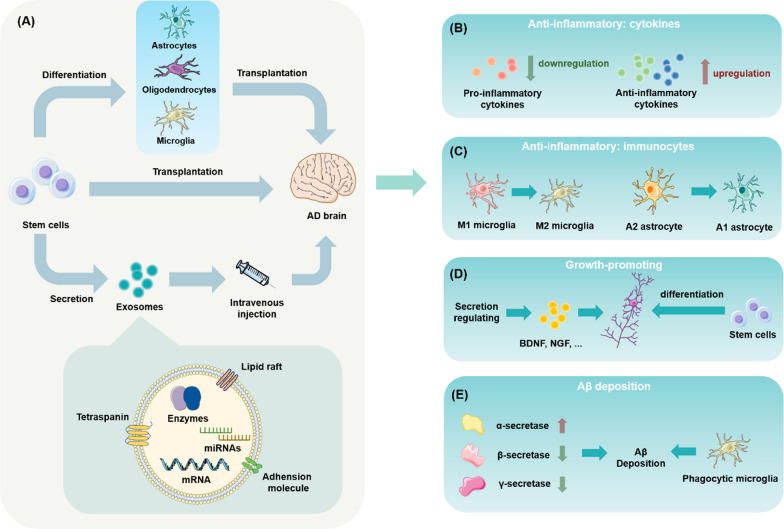Fig. 3.
The role of stem cell-based therapies in the treatment of AD. A Through direct transplantation, retransplantation following differentiation into neural cells, and secretory exosome infusion, stem cells offer various benefits for treating AD. B Stem cells with their differentiated cells and derived exosomes regulate the release of a range of cytokines, reducing levels of pro-inflammatory cytokines (IL-1β, IL-6, TNF-α) and increasing levels of anti-inflammatory cytokines (IL-1 receptor antagonist (IL-1ra), IL-10) in cerebrospinal fluid. C The phenotypes of microglia and astrocytes are changed by stem cells through their differentiated cells and exosomes, shifting them from a pro-inflammatory to anti-inflammatory phenotype and decreasing the inflammatory response in the brain and promoting neuroactivity. D Stem cells with their differentiated cells and derived exosomes are upregulated with Brain-Derived Neurotrophic Factor (BDNF), Nerve Growth Factor (NGF), etc. The stem cells transplanted through exogenous pathways are integrated into the neural network to regenerate synapses. E As MSCs with their differentiated cells and exosomes activate microglia, they specifically phagocytose Aβ or regulate the expression levels of Aβ-related enzymes (e.g., upregulate α-secretase activity or downregulate β-secretase activity) to clear existing Aβ deposits

